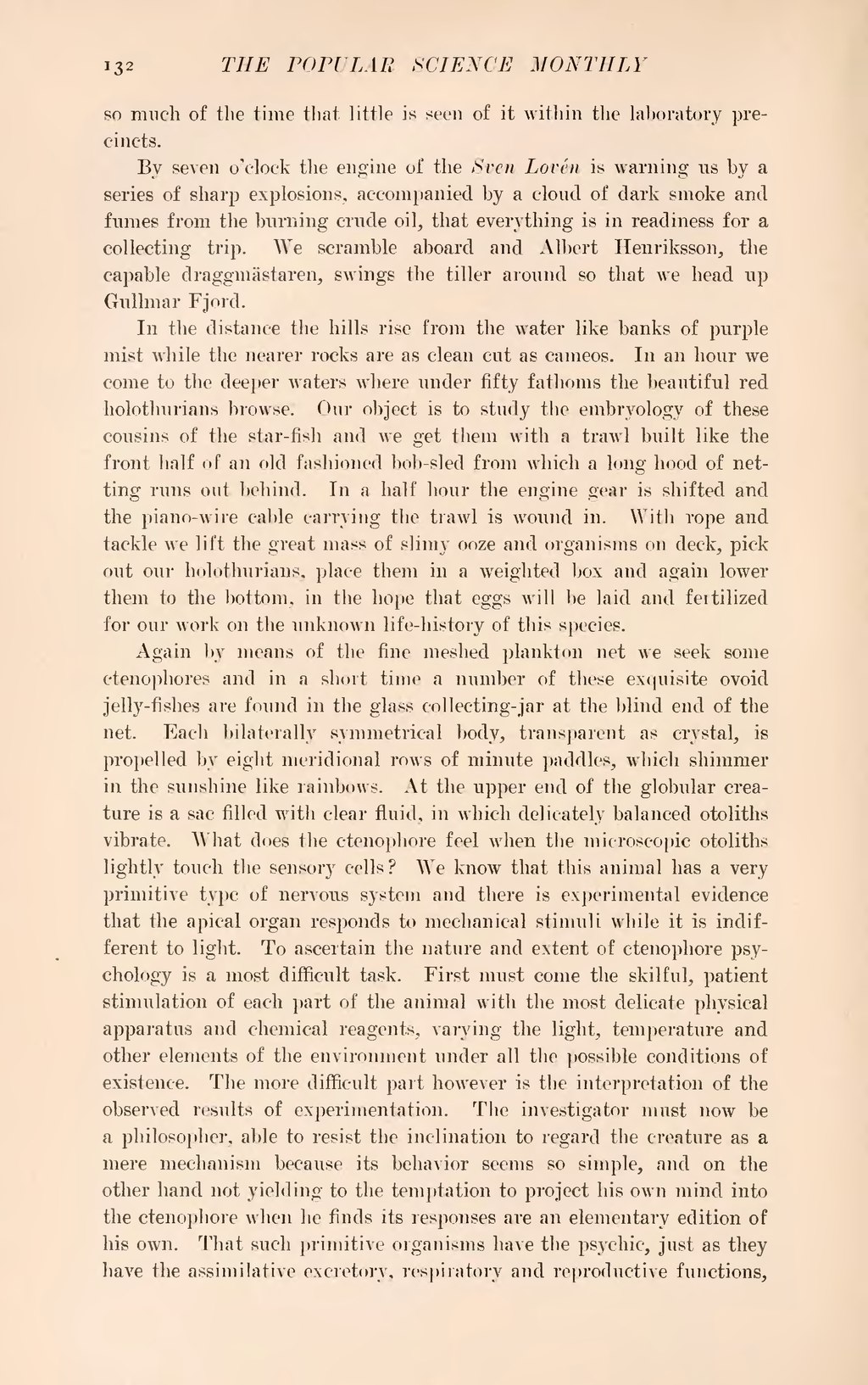so much of the time that little is seen of it within the laboratory precincts.
By seven o'clock the engine of the Sven Lovén is warning ns by a series of sharp explosions, accompanied by a cloud of dark smoke and fumes from the burning crude oil, that everything is in readiness for a collecting trip. We scramble aboard and Albert Henriksson, the capable draggmästaren, swings the tiller around so that we head up Gullmar Fjord.
In the distance the hills rise from the water like banks of purple mist while the nearer rocks are as clean cut as cameos. In an hour we come to the deeper waters where under fifty fathoms the beautiful red holothurians browse. Our object is to study the embryology of these cousins of the star-fish and we get them with a trawl built like the front half of an old fashioned bob-sled from which a long hood of netting runs out behind. In a half hour the engine gear is shifted and the piano-wire cable carrying the trawl is wound in. With rope and tackle we lift the great mass of slimy ooze and organisms on deck, pick out our holothurians, place them in a weighted box and again lower them to the bottom, in the hope that eggs will be laid and fertilized for our work on the unknown life-history of this species.
Again by means of the fine meshed plankton net we seek some ctenophores and in a short time a number of these exquisite ovoid jelly-fishes are found in the glass collecting-jar at the blind end of the net. Each bilaterally symmetrical body, transparent as crystal, is propelled by eight meridional rows of minute paddles, which shimmer in the sunshine like rainbows. At the upper end of the globular creature is a sac filled with clear fluid, in which delicately balanced otoliths vibrate. What does the ctenophore feel when the microscopic otoliths lightly touch the sensory cells? We know that this animal has a very primitive type of nervous system and there is experimental evidence that the apical organ responds to mechanical stimuli while it is indifferent to light. To ascertain the nature and extent of ctenophore psychology is a most difficult task. First must come the skilful, patient stimulation of each part of the animal with the most delicate physical apparatus and chemical reagents, varying the light, temperature and other elements of the environment under all the possible conditions of existence. The more difficult part however is the interpretation of the observed results of experimentation. The investigator must now be a philosopher, able to resist the inclination to regard the creature as a mere mechanism because its behavior seems so simple, and on the other hand not yielding to the temptation to project his own mind into the ctenophore when he finds its responses are an elementary edition of his own. That such primitive organisms have the psychic, just as they have the assimilative excretory, respiratory and reproductive functions,
